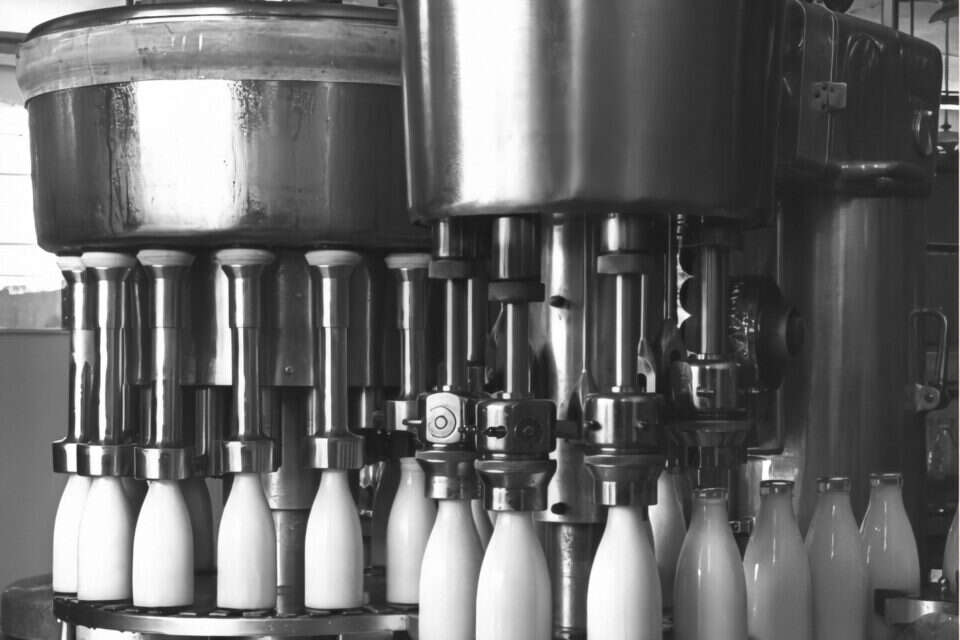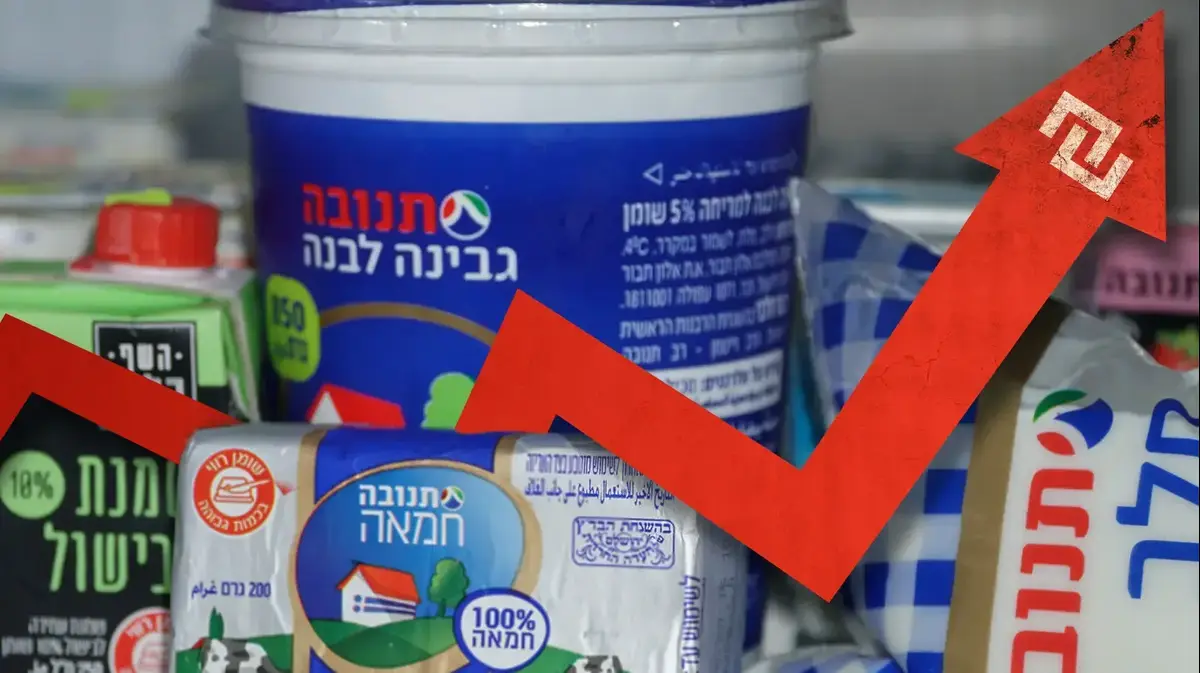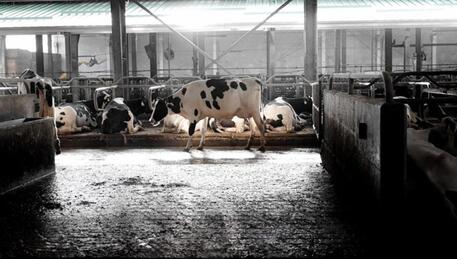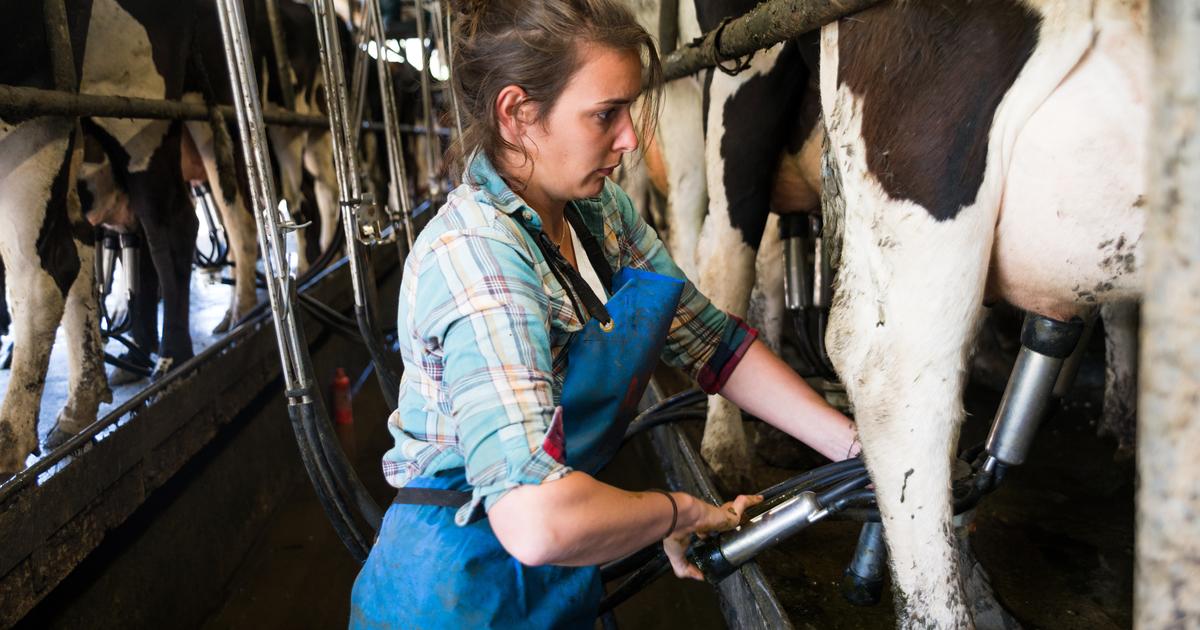The dairy farm was a major axis in the development of Jewish settlement in Israel and the young state of Israel, but even in 1952, milk - a key link in the food menu in the country - lagged behind its quality and hygiene values compared to Western European countries.
At the beginning of 1952, under the supervision of Tnuva, there were about 20 main stores for milk and its products in the big cities, and another 200 buffets and small supply stores throughout the country, but in the field of milk quality Tnuva failed miserably. Are required - and in those days the full pasteurization law of milk was not yet required.
In the same year, Tnuva handled 90 million liters of milk, which came from 125 small or medium-sized dairies, but in each of the ten different regions of the country, the Ministry of Health placed only one milk sanitizer.
In May 1952, the United Nations International Fund for Children (UNICEF) approached the Israeli government with a proposal to fund the costs required to refine milk production so that it could be pasteurized and marketed in an airtight glass bottle to ensure its quality.
This is part of UNICEF's desire to include Israel in the daily milk supply plant for school students.
Funding from UNICEF was received, sophisticated pasteurization machines and bottles came from abroad, and from one glass of milk per day the dairy economy in Israel improved significantly: the Ministry of Health opened a course for dairy hygienists with dozens of trainees. Make surprise visits to cowsheds and dairies to check hygiene, in addition to medical tests for dairymen and dairy workers, to detect diseases such as tuberculosis and typhus.
Three years later, in 1955, all dairy products in the country were sold in glass bottles - which maintained their quality.
Moving to Jerusalem?
Surprise for the diplomatic staff
"Villa Schocken" in Jerusalem, 1952, currently part of the Prime Minister's Residence complex, Photo: Courtesy of the Schocken Institute for Jewish Studies Library
On Monday, May 5, 1952, the foreign diplomatic missions of the 22 countries to be represented in the country were surprised by the announcement by Prime Minister David Ben-Gurion and Foreign Minister Moshe Sharett of the Israeli government's intention to move the Foreign Ministry from Tel Aviv to Jerusalem.
The daily newspapers conducted quick telephone interviews with the various diplomatic representatives in Israel, asking if they would also transfer their deputies to Jerusalem, and all of them replied that they were "waiting for their government's order."
Some of the foreign diplomats did not reject the idea of moving to the capital, and some said that "the transfer of the delegations to Jerusalem is natural and desirable."
In the first days after the prime minister's announcement, representatives of various countries began touring Jerusalem, accompanied by real estate brokers. While Russia, Britain, Italy, France and other countries have already held various historical assets in Jerusalem.
In the end, only Guatemala moved its embassy to Jerusalem in the mid-1950s, followed by 17 more countries over the years.
They all left the capital when the Knesset approved in July 1980 the "Basic Law: Jerusalem, the Capital of Israel" - which the international community saw as a unilateral and unacceptable change in the status of the city.
Today, there are more than 90 embassies and dozens of foreign consulates in Israel, but so far only four embassies have established themselves in Jerusalem: the United States, Guatemala, Honduras and Kosovo.
A dispute in a kibbutz over a bottle of wine
Agriculture at Tel Katzir, 1954, Photo: Boris Carmi, Meitar Collection, National Library
The armistice agreement signed between Israel and Syria at the end of the War of Independence stipulates that between the two countries, in the Jordan Valley, southeast of the Sea of Galilee, there will be a narrow strip known as a "demilitarized zone."
According to the Israeli interpretation, the area is intended to be Israeli sovereign, which will be restricted by the introduction of an army but will be free for Israeli settlement.
On the other hand, the Syrians believed that this was no man's land that belonged to neither side.
In order to give Israeli interpretation validity, the Prime Minister, David Ben-Gurion, ordered that Israeli settlements be brought to the demilitarized zone, and in early November 1949 a group of members of the Scout movement, along with young people from Kibbutz Afikim and a group of boys and girls from Damascus, were established there. harvesting.
Two and a half years later, in May 1952, Maariv journalist Ilana Vered visited Tel Katzir to bring to her readers "impressions from a place forgotten by God, which few have ever visited."
And so Vered wrote: "I found at the point a bunch of young people, most of them teenagers and the elderly among them 22. Of the 100 founders who immigrated to the place at the beginning, 43 remain, and they are in an uplifted mood and confident in their future."
From conversations with the young people, it became clear that before Passover, the kibbutz was experiencing a crisis due to a heated argument between those who supported buying one bottle of wine for the holiday and those who claimed that "the kibbutz, in its difficult financial situation, cannot afford wine."
Vered later reports that "something of the good old pioneering spirit has been preserved here, and the life of luxury of the large kibbutzim in the area is foreign to the young members of Tel Katzir."
The Negev returns to sailing
The ship Negba, 1950, Photo: GPO
The "Negba" cruise ship of "Shoham Passengers" returned from a major renovation of a shipyard in Marseille, and a voyage launched at the end of May 1952 also invited journalists, hoping to enjoy the cruise and report according to their readers (a common practice in the press today).
Upon the return of the ship to the port of Haifa, the journalists were invited to watch the emptying of the "complaints and notices" box placed in it.
It turned out that the few complaints of the passengers concerned the shortage of Yiddish books in the library and the demand to replace the non-kosher French wine with kosher Israeli wine.
On the other hand, many letters of praise were sent to the box, which mainly concerned the high gastronomic level of the ship's kitchen and the special and attentive attitude of the crew.
In Jerusalem you fly to the moon
The Jerusalem Amateur Astronomers' Association purchased a large telescope in mid-May 1952, built by an immigrant from Germany and lying unused in a basement in Haifa.
To raise funding for the establishment of a public observatory in the capital, the association organized an event, during which visitors were given the opportunity to view the stars through a telescope, for a fee.
Later, the movie "Journey to the Moon" was screened, and the association's member, Dr. Almwander, lectured on the potential of moon flights. ", Notice from London of the planned date.
The Malavsky family in Lod
The Jewish-American Malavsky family performed throughout the Jewish world in cantorial songs and Jewish folk music.
The father of the family, Shmuel, who was a cantor and composer, served as lead singer, and he was accompanied as a choir by his four daughters and two sons.
On Friday, May 2, 1952, their plane landed from the United States a few minutes after Shabbat, and the family stayed overnight at the hotel that operated at Lod Airport at the time. , For the enjoyment of those present.
The Disappearing / Childhood Games of Once Upon a Time
Bouncing
Illustration: Eitan Kedmi, from the book "Truth or Duty",
A home game for two, when it was forbidden to go out to play due to weather conditions, or due to a penalty.
The game used a box of matches, which they would place on the edge of the table - and with the help of a thumbs-up they would fly it in the air.
If the box landed on her stomach, the player received one point.
Landed on its wide side?
two points.
And on its narrow side - three.
All the while, Mom kept screaming, "Just don't play with the matches themselves, did you hear?"
The grocery store / drinks from time to time
Goldsen
Photo: Nostalgia Online Archive,
Another brand of orange juice, one of many, from the good times when the Israeli citrus fruit was at the top of the export table, and in every sip we felt partners in the great national pride.
Most residents of the country have been drinking Paz orange juice in a squat glass bottle since 1933, and Goldsen was one of the brands that sought to bite into this market segment with the statement "no added food coloring" - which appeared on the label.
Canned agriculture
Photo: Courtesy of the Kibbutz Ashdot Yaakov Archive,
In the early 1950s, Hebrew agriculture suffered from planning shortcomings, which caused a mismatch between the amount of produce distributed and the demand for it in the market.
The problem stemmed from the fact that young farms enjoyed a commitment on the part of the government to purchase all their produce, while older farms, such as the kibbutzim, were sometimes left stuck with stocks - without a buyer.
To solve the problem, canning factories were established, such as "Eshed" in Kibbutz Ashdot Yaakov (in the photo), which in days of surplus crops produced canned vegetables, juices and jams, and in days when all the crops were sold worked hard to produce the tin cans needed to fill the cans.
Ads that were
Do you have pictures or souvenirs from the first days of the country? Write to us: Yor@ShimurIsrael.Org
Were we wrong?
Fixed!
If you found an error in the article, we'll be happy for you to share it with us









